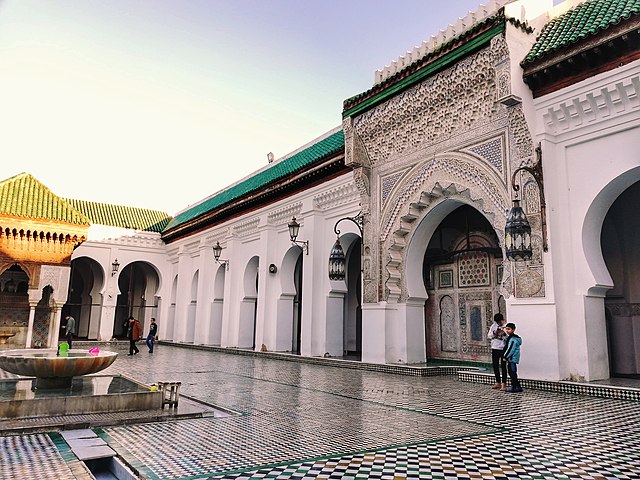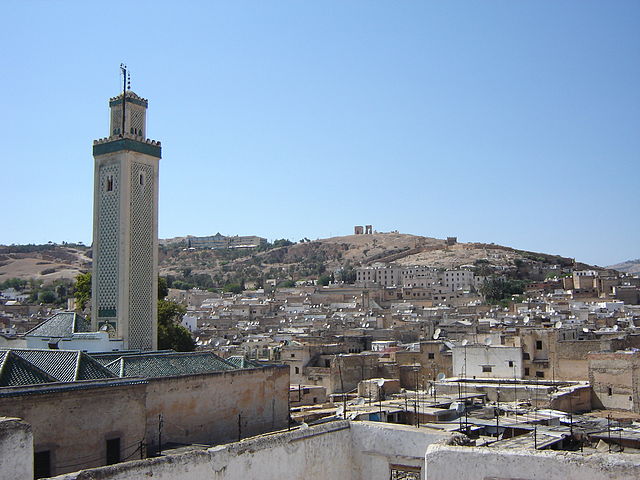Fes Jdid or Fes el-Jdid is one of the three parts of Fez, the second largest city of Morocco. It was founded by the Marinids in 1276 as an extension of Fes el Bali and as a royal citadel and capital. It is occupied in large part by the historic Royal Palace, which was once the center of government in Morocco and which is still used on occasion by the King of Morocco today. The district also contains the historic Mellah of the city. Since 1981 it has been classified, along with Fes el-Bali, as a UNESCO World Heritage Site.
View of the Grande Rue or main street of Fes el-Jdid, with the minaret of the Marinid-era al-Hamra Mosque
Photo of the Old Mechouar (Vieux Méchouar), the square in front of the Royal Palace's entrance, circa 1920. This was originally the main northern entrance to the city, and the Fes River still passes under it.
Marinid walls on the northern side of Fes el-Jdid (photographed in 1916)
The Jewish Cemetery in the Mellah
Fez or Fes is a city in northern inland Morocco and the capital of the Fès-Meknès administrative region. It is the second largest city in Morocco, with a population of 1.11 million, according to the 2014 census. Located to the northwest of the Atlas Mountains, it is surrounded by hills and the old city is centered around the Fez River flowing from west to east. Fez has been called the "Mecca of the West" and the "Athens of Africa". It is also considered the spiritual and cultural capital of Morocco.
Image: University karaouiyine of fes
Image: Dar el Makhzen (King's Palace), Fes (8958091984)
Image: Fès et sa médina
View of Fes el-Bali and the minaret of the Zawiya of Moulay Idris II, which commemorates Idris II, one of the founders of Fez








